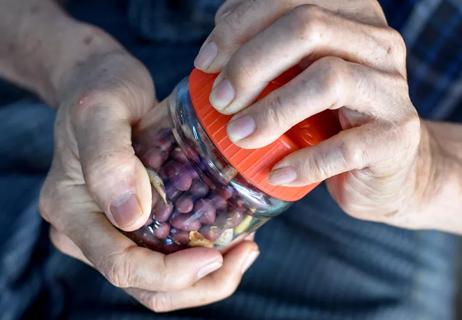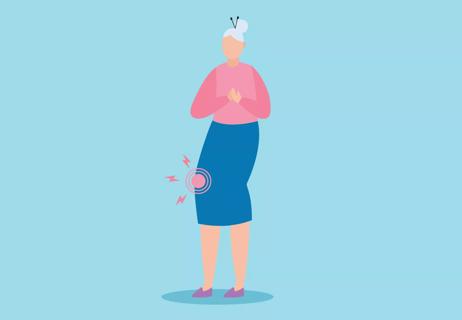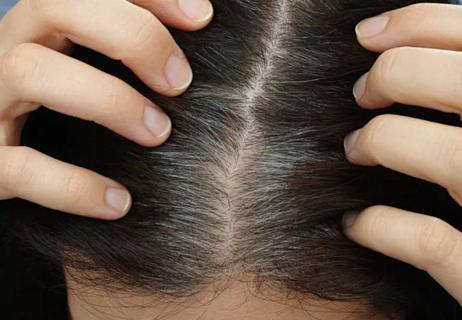When free radicals don’t have antioxidants to keep them in check, they go rogue

Our bodies are run by a system of incredibly complex processes that keep each other in balance. At the microscopic level, your health is, in part, a result of a carefully choreographed dance between your molecules.
Advertisement
Cleveland Clinic is a non-profit academic medical center. Advertising on our site helps support our mission. We do not endorse non-Cleveland Clinic products or services. Policy
When the steps are followed precisely, molecules work in concert to help keep you healthy. Like a line dance gone awry, though, if one molecule slides to the left while the other slides to the right, crashes are inevitable.
Enter free radicals, the molecules with the potential to crash your party, if left to their own devices.
You’ve probably heard of free radicals. They’re often connected with aging skin, cancer, Alzheimer’s disease and more, but what are they, really? And how can they be stopped?
We talked with registered dietitian Anthony DiMarino, RD, for an easy-to-follow explanation of free radicals and what you can do about them.
Essentially, free radicals are unstable molecules looking for a dance partner.
Molecules are, in part, made up of electrons. Those electrons usually come in even numbers. But free radicals have an odd number of electrons. And they’re not happy about it.
“Free radicals are missing an electron from their outer shell. That makes them unstable, so they go and steal an electron from the molecules in your skin cells, or from your blood cells or from wherever they can. That causes damage to surrounding cells,” DiMarino explains.
Thinking back to the dance, free radicals are the belligerent friend who’ll grab anyone in arm’s reach to do-si-do.
Advertisement
Antioxidants are also unstable and looking for a partner. Like free radicals, antioxidants have an uneven number of electrons. Unlike free radicals, though, antioxidants don’t typically steal from otherwise stable molecules to keep themselves in check.
But antioxidants do happily take an unpaired electron from a free radical. That makes both molecules even-steven.
In the absence of antioxidants, free radicals will tango with just about anyone. And they step on some toes in the process.
If you don’t have enough antioxidants to keep free radicals in check, they go rogue and steal electrons from wherever they can get them. When you have too many free radicals gobbling up electrons from stable molecules, it’s called oxidative stress. When that happens, cells get damaged and even die.
“When free radicals build up and start stealing electrons, those molecules, in turn, become unstable,” DiMarino says. “That leads to cellular damage down to the DNA level. So, when your body is experiencing oxidative stress in a particular area, we find signs of aging and disease.”
Oxidative stress is like that out-of-control mosh pit that’s forming on the side of the stage. And free radicals are the ones throwing elbows at you.
Studies have connected oxidative stress as a result of a buildup of free radicals to a number of diseases and signs of aging.
“The instability that free radicals cause creates damage right down to the DNA level,” DiMarino explains. “The cells become damaged, and negative effects manifest themselves. So, if you’re out in the sun too much, you can get oxidative stress in your skin, and that can lead to sun spots or even skin cancer. High blood sugar can cause oxidative stress on the blood vessels, which can lead to heart disease and poor circulation, for example.”
A short list of diseases that have been connected to free radical damage includes:
Research explains that free radicals are naturally occurring molecules that are both created by our bodies and that enter our bodies from our environment.
Sources of free radicals in our environment include:
Advertisement
Your body also produces free radicals naturally, including in response to stress and inflammation. Studies show oxidative stress can also occur after an extreme intensity workout.
The fact is that you can’t completely avoid free radicals. You can, however, limit your exposure to some unnecessary free radicals.
There are two ways to keep free radicals from taking over your dance floor. One is to limit how many of them you let in. The other is to take in enough antioxidants to keep the free radicals from taking center stage.
Researchers suggest a few ways you can protect yourself from an abundance of free radicals:
Antioxidants are the key to keeping free radicals from doing the two-step with your healthy cells. Your body naturally creates some antioxidants, but DiMarino says an antioxidant-rich diet can help as well.
Getting your antioxidant fix from your diet has been proven to help minimize your risk of oxidative stress and damage. Try these vitamin-rich foods that are high in antioxidants:
Advertisement
Remember that, just like free radicals, antioxidants are unstable molecules, so an overabundance of antioxidants can potentially be damaging. DiMarino says over-supplementing with antioxidants can be problematic, so stick with getting your antioxidant fill from healthy foods before considering supplements.
“Food-first is always the best way to go in terms of getting proper nutrition,” DiMarino says. “If you think you aren’t getting enough antioxidants from the foods you eat, talk with your doctor about whether a supplement could help.”
Bottom line: Free radicals are like the Whitney Houston song — they just wanna dance with somebody. Shut them out as best you can by following a healthy lifestyle. As for the rest, a diet rich in antioxidants can help keep your biochemical music bumpin’.
Advertisement
Learn more about our editorial process.
Advertisement

Living longer is more than just growing older — it’s also about living life to its fullest

Turns out your health really is in your hands

A look at bone buildup and loss throughout your life

What to look for and how to handle signs of impaired driving

The short answer from a pain specialist

It’s a natural process, but stress and smoking don’t help

Advice for preventing and treating health issues

What you can do about hearing and vision loss

Type 2 diabetes isn’t inevitable with these dietary changes

Applying a hot or cold compress can help with pain